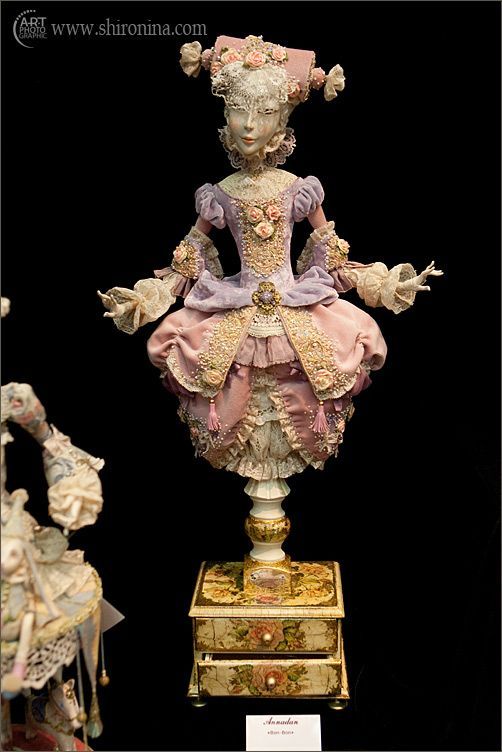|
|
International Doll Salon, Moscow, Russia
|
In Western society, a gender difference in the selection of toys has been observed and studied. Action figures that represent traditional masculine traits are popular with boys, who are more likely to choose toys that have some link to tools, transportation, garages, machines and military equipment. Dolls for girls tend to represent feminine traits and come with such accessories as clothing, kitchen appliances, utensils, furniture and jewelry.
Pediophobia is a fear of dolls or similar objects. Psychologist Ernst Jentsch theorized that uncanny feelings arise when there is an intellectual uncertainty about whether an object is alive or not. Sigmund Freud further developed on these theories. Japanese roboticist Masahiro Mori expanded on these theories to develop the uncanny valley hypothesis. If an object is obviously enough non-human, its human characteristics will stand out, and be endearing. However, if that object reaches a certain threshold of human-like appearance, its non-human characteristics will stand out, and be disturbing.
• Doll hospitals
A doll hospital is a workshop that specializes in the restoration or repair of dolls. Doll hospitals can be found in countries around the world. One of the oldest doll hospitals was established in Lisbon, Portugal in 1830, and another in Melbourne, reputedly the first such establishment in Australia, was founded in 1888. There is a Doll Doctors Association in the United States. Henri Launay, who has been repairing dolls at his shop in northeast Paris for 43 years, says he has restored over 30,000 dolls in the course of his career. Most of the clients are not children, but adults in their 50s and 60s. Some doll brands, such as American Girl and Madame Alexander also offer doll hospital services for their own dolls.
|
|









